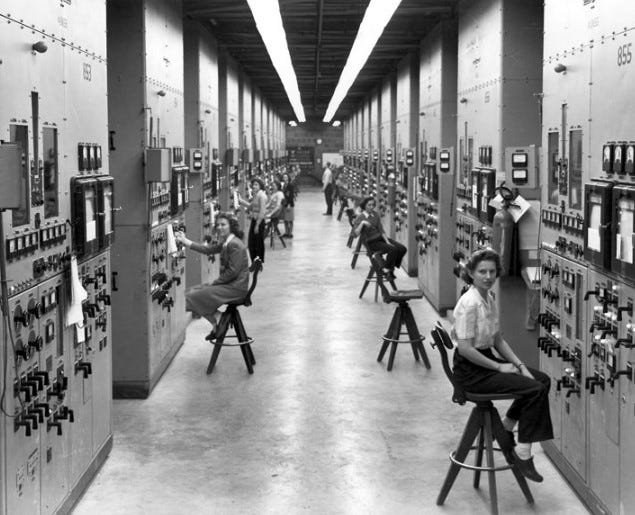On this day in 1945, the United States drops an atomic bomb on the Japanese city of Hiroshima. The action ultimately brought World War II to an end.
Much has been said and written about the Enola Gay, which dropped the bomb, but do you know about the “Calutron girls” who made creation of the “Little Boy” atomic bomb possible?
“[B]ehind the epic tales of kings and generals are the stories of the everyday people who just as surely leave a mark on the world,” the author of The Atomic City Girls writes. The Calutron girls were exactly that: They were just regular American women who wanted to help the war effort. Most were young and had only recently graduated from high school.
They volunteered to help, but they had no idea they were working on a bomb until after the fact.
“I came right out of high school when I graduated,” Dorothy Wilkinson later explained, “because I had a brother killed on the Arizona at Pearl Harbor. I thought I would like to do something for the war effort.” Another Calutron girl agreed that it “helped to make the war faster won, and I was interested in that.”
The girls worked at a plant in a secret city in eastern Tennessee. Would you believe that 75,000 people lived in this city, although it didn’t appear on any maps? Oak Ridge, Tennessee, was a thriving town with movie theaters, roller rinks, and other sorts of entertainment.
Yet absolute secrecy was required, as everyone absolutely knew.
“You couldn’t talk,” Gladys Evans said. “You couldn’t say anything to anybody about where you worked, what building, when you left the plant. . . . there were huge banners up all over the plant: ‘When you leave here what you see here stays here.’”
Another girl remembered she couldn’t even talk to the women sitting next to her. “I assumed they were doing the same thing, but I had no way of knowing . . . . We couldn’t compare notes.”
Evans would remember a manager noting that he could train the girls, but that he “cannot tell you what you are doing. I can only tell you that if our enemies beat us to it, God have mercy on us!”
The Calutron girls worked 8-hour shifts, seven days per week. Their job was straightforward: Sit on a wooden stool in front of a big machine, adjusting handles, knobs, and switches. A needle on the machine was to be monitored and kept within a certain range. The girls didn’t then know it, but the machines were separating uranium isotopes into something that would be usable for an atomic bomb.
During 1944 and 1945, about 10,000 women staffed 1,152 calutrons, and they produced 140 pounds of usable uranium. They’d been more efficient at their work than the scientists who had created the calutrons in the first place.
Some of the girls had enough knowledge of chemistry to figure out some of what they were doing. “If you were a chemistry student, you had an idea that the Product was somewhere in the bottom of the periodic table,” Wynona Butner mused. “We were just surmising.”
After the bomb was dropped on Hiroshima, the girls finally learned what they’d been doing all that time. “We were producing uranium,” Ruth Huddleston marveled. “I felt like I had a part in helping end the war, but I kept thinking I had a part in killing those people.”
Her mixed feelings were shared by others, including Gladys Owens, who declared that she “wanted to forget the whole thing.”
“People tell me about all the thousands of lives that were lost,” she concluded, “and I tell them I don’t have time to think about that for thanking God for the millions that were saved.”
Perhaps living with those mixed emotions is yet another sacrifice made by the Greatest Generation?
Sources can always be found on my website, here.





Causing the death of thousands, saving the lives of millions. That IS the horror of war. Roosevelt was right: "I hate war." But we dare not shrink from it as there are so many that will do us harm, destroy all we are and do. Do that which is horrible to avoid that which is worse.
My grandmother was one of these unsung heroes and even saved the plant from blowing up one day! Thanks for writing this!